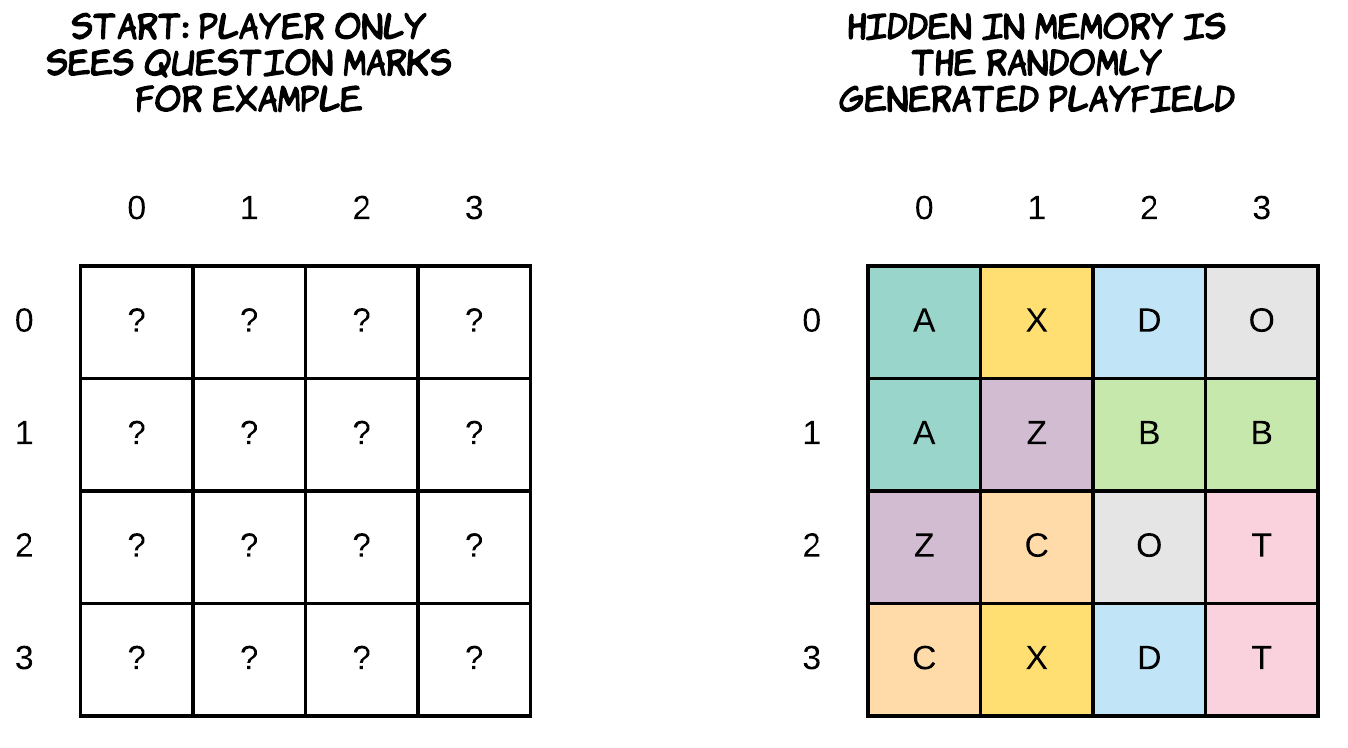Where's My ASCII is a game meant to train the memory capacity of your brain.
It consist of a randomly generated playfield of tiles, where each tile contains a hidden letter.
The idea is that the player can turn over two tiles searching for matches.
Once a match between 2 tiles is found, the tiles should stay visible and cannot be selected anymore.
The game should also introduce a difficulty that influences:
- the characters used (upper case and lower letters, digits, ...)
- the size of the playfield
- the number of tiles that need to match (2, 3, ...)
Minimal requirements:
- Makefile, README, gitignore, ...
- Git history: This game needs a decent number of commits. If the progress can not be seen in the history of git I may assume you just copy pasted some stuff from internet
- Sources of things you use from the internet
- Generate playfield randomly
- User should be able to type the coordinates of the tile he/she wishes to turn
- Difficulty level: easy, medium, insane, ...
- Next are some ideas, feel free to determine these difficulty levels yourself
- Easy can for example be a playfield of 4 by 4, only containing upper case letters - requiring matching of 2 tiles
- Medium can for example be a playfield of 6 by 6, containing upper case letters and digits - requiring matching of 2 tiles
- Insane can for example be a playfield of 8 by 8, containing upper and lower case letters and numbers - requiring matching of 3 tiles
- OOP, everything should be object oriented. This project needs at least classes such as
Game,Playfield,Tile,Player,PlayfieldGenerator, ... - User friendly:
- Welcome the player, explain the game, show help, ...
- Show a decent playfield interface
- Inform the user what characters he/she needs to be looking for
For extra points:
- Scoreboard: if you did your job in WordBlaster than this should be almost no work
- Easter eggs and cheats
- Create a more visual interface, this is even possible in the terminal
- Powerups or something something similar. For example if you find two matches within 5 seconds of each other 5 random tiles are shortly visible
- ...
The idea is that you can be really creative in your implementation and your interface. Use your creativity wisely to make this a fun and nice looking game.
Screencast:
- Make sure to provide a small screencast (couple of minutes) to clarify the following topics:
- Show the compilation proces and how it is compiled
- Show the application and explain how it works
- Conclusion: What went well, what was hard, special libraries you used, ...
- No code-scrolling ! If you wish, you can always show an overview of your classes using a UML-diagram.
Use Kaltura or OBS Studio to make your screencast. Upload the video to YouTube and place a link in this README.
The deadline for this challenge is: Monday the 8th of June (23:59)
This challenge is a solo-challenge. While you can help someone by giving some pointers or explaining something, the repo's should not contain copy-pasted code from another student. This challenge is a big part of you grade for OOP3, so be sure to take this challenge serious.


